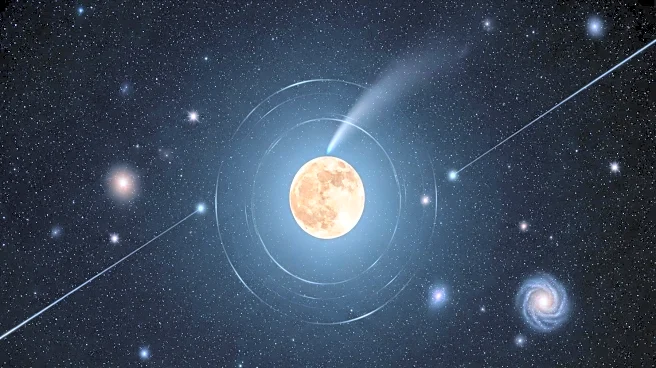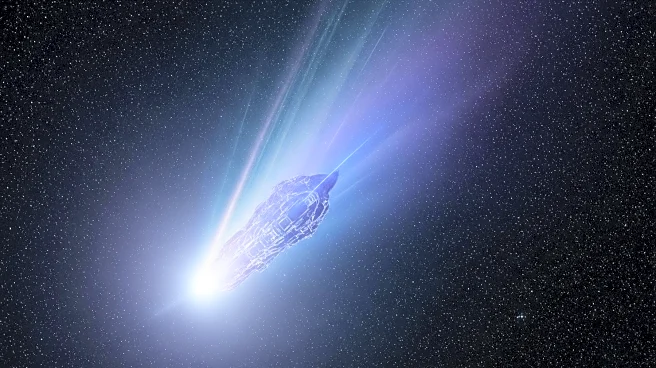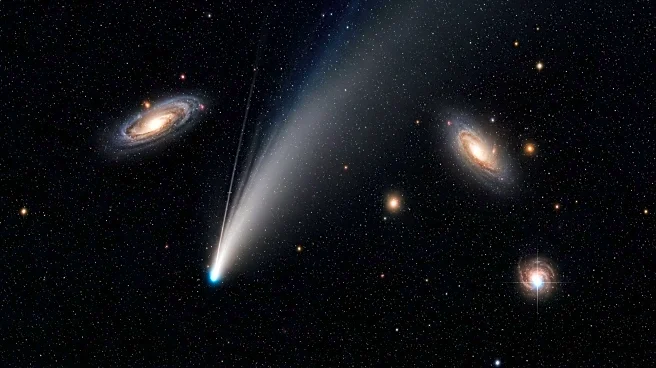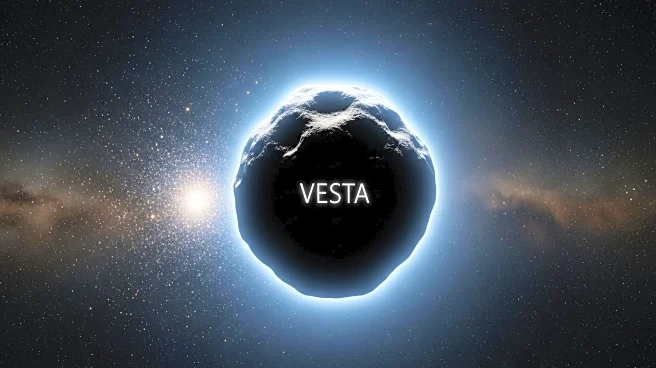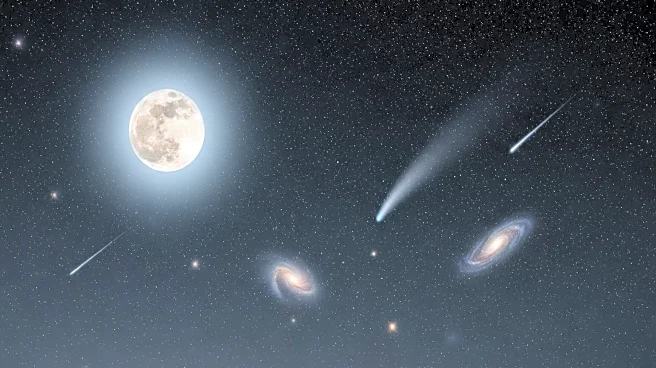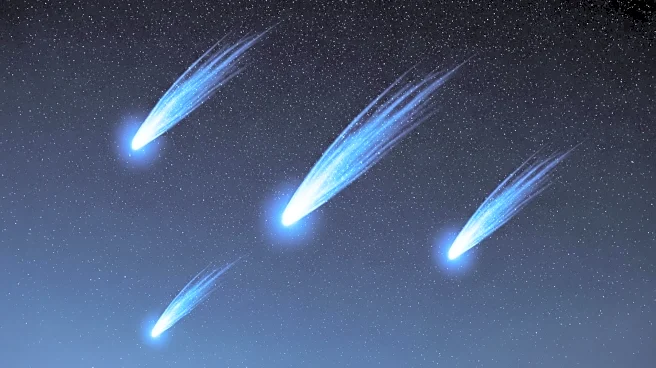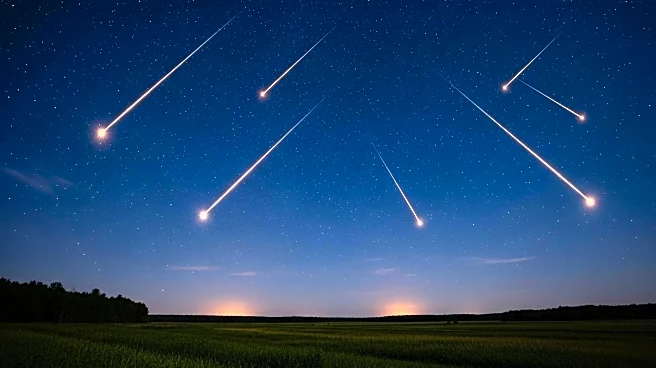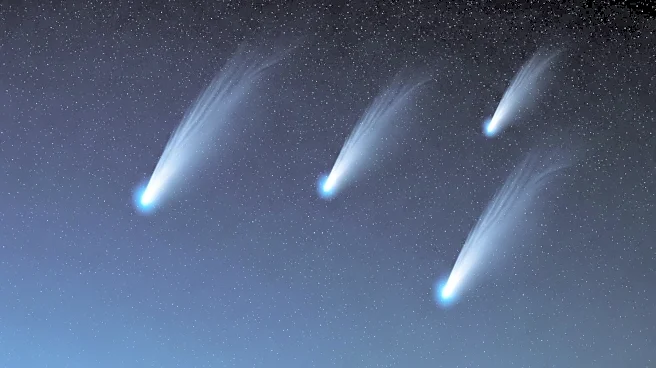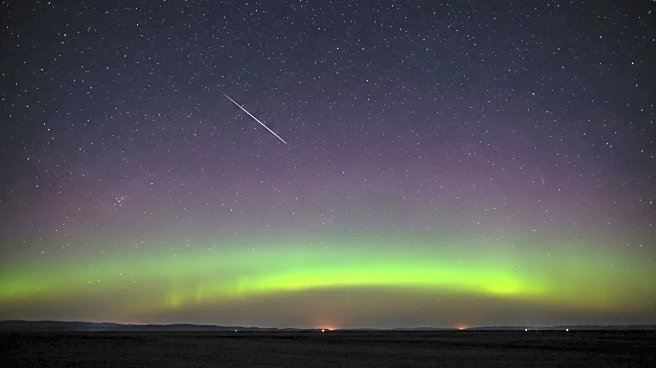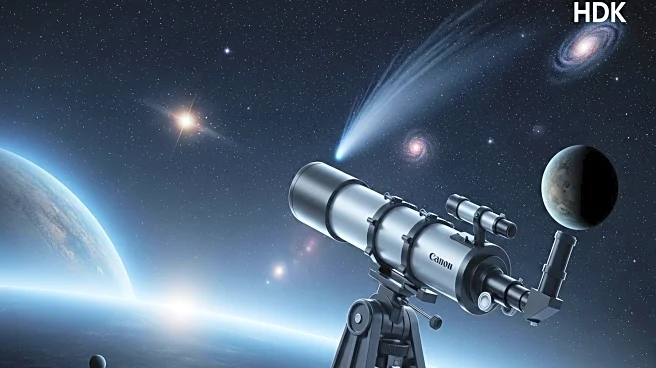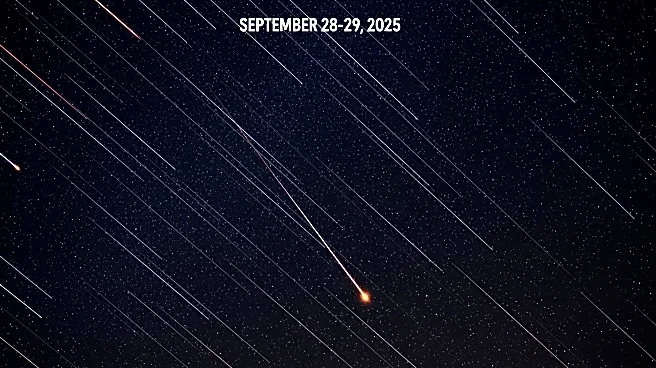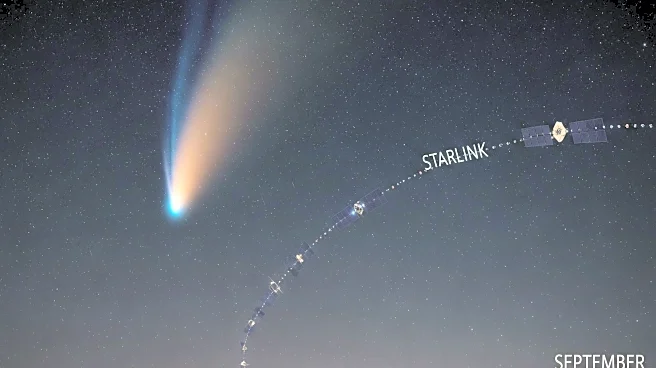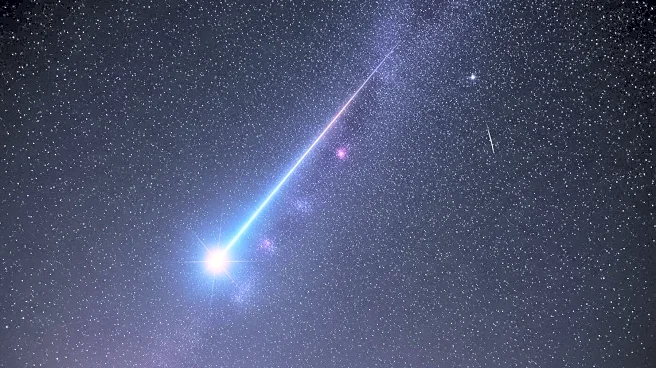What is the story about?
What's Happening?
October 2025 is set to be a remarkable month for skywatchers, featuring a series of astronomical events. The Harvest Supermoon will occur on October 6-7, marking the largest and brightest moon of the year due to its proximity to the autumn equinox and lunar perigee. This is the first October Harvest Moon since 2020 and the last until 2028. Additionally, two meteor showers will peak in October: the Draconids around October 8, which may be overshadowed by the full moon's brightness, and the Orionids on October 21-22, offering ideal viewing conditions due to the new moon. Furthermore, three comets will be visible, including the interstellar Comet 3I/ATLAS, which will reach perihelion on October 30, and Comets SWAN and Lemmon, which will brighten in the sky, with Lemmon potentially visible to the naked eye.
Why It's Important?
These astronomical events provide unique opportunities for both amateur and professional astronomers to observe rare celestial phenomena. The Harvest Supermoon offers a chance to witness the moon at its largest and brightest, a visual spectacle that attracts skywatchers. The Orionid meteor shower, with its peak coinciding with a new moon, promises optimal conditions for viewing meteors, enhancing public interest in astronomy. The presence of multiple comets, including the interstellar Comet 3I/ATLAS, presents significant scientific interest, allowing astronomers to study objects from outside our solar system. These events can inspire educational activities and public engagement with astronomy, fostering a greater appreciation for the natural world.
What's Next?
Skywatchers are advised to prepare for these events by finding locations with minimal light pollution to maximize visibility. The Orionid meteor shower, in particular, will be best observed after midnight, facing the southeast. Comet Lemmon's visibility will depend on its brightness, and observers should use star charts or apps to track its movement across the sky. As the month progresses, astronomers will continue to monitor Comet 3I/ATLAS, especially after it emerges from the sun's glare in December, providing further opportunities for observation and study.
Beyond the Headlines
The occurrence of these events highlights the dynamic nature of our solar system and the broader universe. The study of interstellar comets like 3I/ATLAS can offer insights into the composition and behavior of objects from beyond our solar system, potentially informing theories about the formation and evolution of celestial bodies. The public's engagement with these events can also stimulate interest in science and technology, encouraging educational initiatives and inspiring future generations of astronomers.
AI Generated Content
Do you find this article useful?
